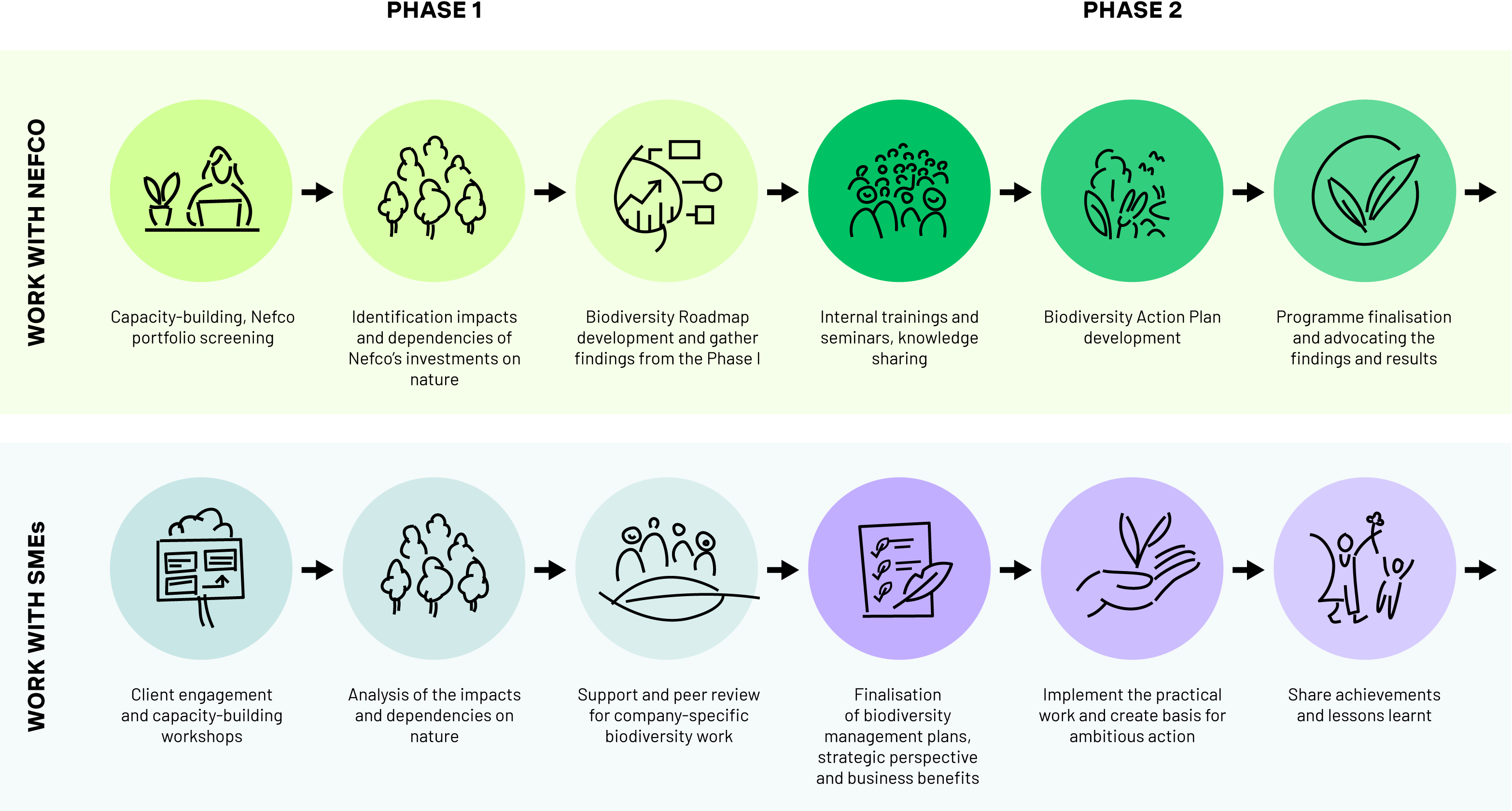Photo: Johannes Jansson
Programme structure
The Biodiversity Pilot Programme was divided into two phases. The first phase aimed to create knowledge and establish a framework for subsequent pilot initiatives. The results of the first phase formed the base for phase two, which focused on developing ideas into scalable solutions and generating action.
In addition to working with pilot companies, the programme also focused on Nefco’s own impact on biodiversity in accordance with Nefco’s existing Biodiversity Roadmap created in 2022, and outlined the next steps for its implementation. Read more about the roadmap published in 2022.

Overview of the project phases and workstreams
 |
Phase 1:
Creating knowledge
The main objective of the first phase was to improve the understanding of both Nefco’s and the pilot companies’ impacts and dependencies on nature and to lay the groundwork for planning and implementing projects.
The first phase also included biodiversity assessments for Nefco’s SME portfolio and the pilot companies. This work deepened understanding of the biodiversity risks associated with different companies’ operations, as well as the opportunities for aligning biodiversity work with their business strategies. This can help companies differentiate themselves from their competitors and create a competitive advantage.
Phase 2:
Accelerating action
In the second phase, the pilot companies developed Biodiversity Management Plans aimed at integrating biodiversity considerations into their business strategies and value chains and implementing the planned actions.
Nefco’s Biodiversity Roadmap
Nefco’s Biodiversity Roadmap was first outlined in 2022. In the Biodiversity Pilot Programme, the roadmap and its implementation were further developed.
Ambition level and commitment
- Defining the main objective—What does Nefco want to achieve in biodiversity and nature (how to integrate)
- Align Nefco key stakeholders' expectations and priorities for the future
Integrating biodiversity into financing and financial mechanisms
- Main lessons and findings from the Nefco Biodiversity Pilot Programme
- Further developing biodiversity assessment of investments
- The results of the screening: conclusions and recommendations (prioritisation of high-risk sectors, development of sector-specific actions)
- Exploring financial instruments
Capacity-building,
partnerships and innovation
- Good practices and scaling up of lessons learned through pilot projects
- Developing and utilising training materials from Nefco Pilot Programme
- Financing innovative biodiversity pilot projects
- Recommendations for actors to identify potential partners and actors to collaborate with
Monitoring and reporting
- Develop assessment tools and reporting method
- Adapt monitoring framework to track progress (e.g. TNFD metrics)
“Biodiversity work can help companies differentiate themselves from their competitors and create a competitive advantage.”